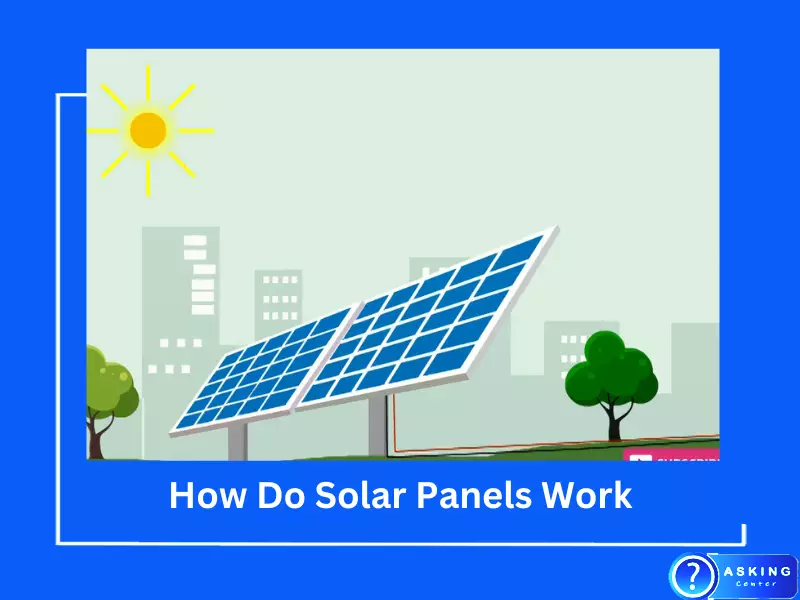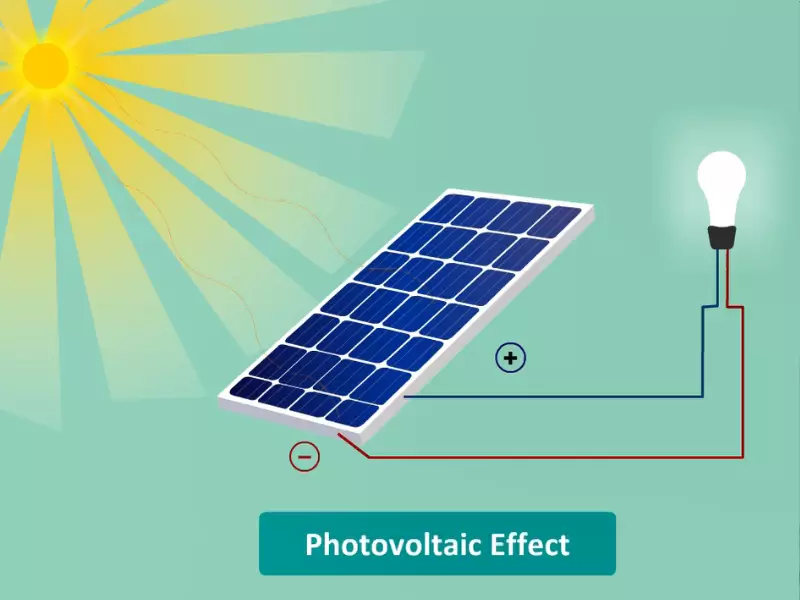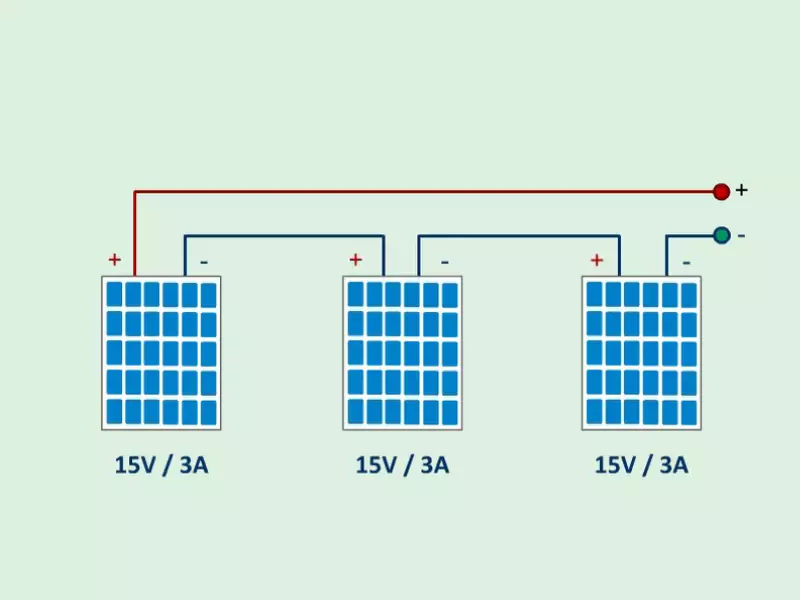The transition from traditional energy sources to renewable energy is a hot topic today, with solar power at the forefront of this movement. Harnessing the power of the sun, solar panels offer a sustainable and environmentally-friendly energy solution, paving the way for a future less dependent on fossil fuels.
Solar panels convert sunlight, a clean and abundant source of energy, into electricity. This conversion is possible thanks to the sophisticated technology of photovoltaics. In essence, solar panels absorb sunlight and transform it into electricity, providing power for a myriad of applications, from small household appliances to large industrial systems.
We will take you on a journey through the fascinating world of solar energy. Explore the nuts and bolts of photovoltaics, the anatomy of a solar panel, and the transformation of sunlight into electricity. You’ll learn how this technology can power your home, save you money, and contribute to a sustainable future.
The Basics of Photovoltaics
What is Photovoltaic Effect?
Photovoltaics (PV) is the technology by which solar energy is converted into direct current electricity using semiconducting materials. The term “photovoltaic” originates from the Greek word ‘phos’ meaning light, and ‘volt’, the unit of electromotive force.

The photovoltaic effect, the principle underlying this technology, was first observed in 1839 by French physicist Alexandre Edmond Becquerel. It’s a physical and chemical phenomenon that involves the creation of voltage or electric current in a material when exposed to light.
The Composition of Sunlight
Sunlight, scientifically known as solar radiation, is a mixture of electromagnetic waves ranging from infrared (IR) to ultraviolet rays (UV), with visible light in between. The energy carried by sunlight is what powers the solar cells in a photovoltaic module.
What Are Solar Panels Made Of?
Solar panels are composed of several key materials:
- Silicon: Most solar panels are made from silicon, a semiconductor that effectively converts light into electricity.
- Metal Frame: The metal frame provides structure and stability to the panel, often made from aluminium for its lightness, strength, and resistance to corrosion.
- Glass Casing: The glass casing protects the silicon cells from environmental factors like weather and debris.
- Wiring and Busbars: The electrical connections within the panel allow the flow of generated current from the cells to an external circuit.
Types of Solar Panels
There’s a variety of solar panel types available in the market today, each with its specific advantages, characteristics, and use cases. They are differentiated based on the type of semiconductor material used, the crystalline structure, and the manufacturing process. Here are the most common types:
Monocrystalline solar panels
These panels are known for their uniform, dark look and rounded edges. The solar cells in these panels are made from a single crystal structure, hence the name ‘mono’. This type of structure enables electrons, which generate the flow of electricity, to move more freely across the cell, resulting in a higher efficiency rate.
Monocrystalline solar panels are typically more expensive due to the complex manufacturing process required to create this single crystal structure, but they offer the highest power output and longest lifespan, usually around 25 to 30 years.
Polycrystalline solar panels
Unlike monocrystalline panels, polycrystalline panels consist of multiple fragments of silicon crystals instead of a single crystal structure. These fragments are melted together to form the wafers for the solar cells.
This process makes polycrystalline panels less efficient than monocrystalline panels because the boundaries between the individual crystals can interrupt the free movement of electrons, thereby reducing the cell’s ability to convert sunlight into electricity. However, polycrystalline panels are less expensive and have a slightly shorter lifespan but are a popular choice for residential solar installations due to their good balance between price and efficiency.
Thin-film solar panels
Thin-film panels are the least efficient of the three main types but are also the cheapest to manufacture. They’re made by depositing a thin layer of photovoltaic material onto a solid surface, like glass.
The type of photovoltaic material used can vary, but the most common type is cadmium telluride (CdTe). Thin-film solar panels are lightweight and flexible, and they perform well in high temperatures and low-light conditions. However, they require a lot of space, which can be a limiting factor for residential installations.

Concentrated PV cell (CVP and HCVP)
Concentrated photovoltaic cells are a newer technology in the solar world that aims to maximize the efficiency of solar panels. These panels employ curved mirrors or lenses to focus sunlight onto small, highly efficient multi-junction (MJ) solar cells.
They also use solar trackers and sometimes cooling systems to further increase their efficiency. CVPs have the highest efficiency of all panels, sometimes exceeding 40%. However, they’re the most expensive and are mainly used in solar power plants or for commercial installation where space is limited but high power output is required.
N. B: Each type of solar panel is best suited for different situations and requirements, so the ideal choice will depend on factors such as the available space, budget, desired power output, and aesthetic preferences. As technology continues to advance, we can expect even more varieties and better efficiencies in the future.
How Do Solar Panels Convert Solar Radiation Into Electricity?
The magic of solar panels lies in their ability to turn sunlight, or solar radiation, into usable electricity. This is a multi-step process involving physics and engineering at the atomic level. Here’s a breakdown:
The process of sunlight absorption
When sunlight hits the silicon cells in the solar panel, photons in the sunlight are absorbed by the silicon. Silicon, as a semiconductor, has properties of both metals and non-metals, making it a crucial element in this process.
Creation of electron-hole pairs
The energy of the absorbed photons is transferred to the silicon atoms, exciting the electrons and pushing them into a higher energy state. This process creates an electron-hole pair; the electron is in a higher energy state (conduction band), leaving a hole in the lower energy state (valence band).
Movement of electron-hole pairs
Under the influence of the electric field of the solar cell, the electron is attracted to the N-type silicon, and the hole to the P-type silicon. This separation of charge creates an electric current.
Power generation
The current generated can be captured via conductive metal plates on the sides of the cells and transferred to wires, thus, generating electricity.
A helpful way to visualize this process is to think of a busy city intersection. The sunlight (pedestrians) cross the intersection, bumping into the electrons (cars), causing them to move, which generates the flow of traffic (electricity).
How Does The Electricity From Solar Panels Power Your Home?
The electricity generated by solar panels can be used directly or stored for later use. But how does this electricity actually power a home? Here’s a simplified explanation:
The Home PV System and How It Works
- Solar Panels: These absorb sunlight and convert it into DC (Direct Current) electricity.
- Solar Inverter: The DC electricity is sent to a device called an inverter, which converts the DC electricity into AC (Alternating Current) electricity, the standard electrical current used by most household appliances.
- Electrical Panel: The AC electricity is sent to your home’s electrical service panel, where it’s distributed to different appliances and areas of your home.
- Utility Meter: The utility meter measures your electricity supply. If your solar panel system generates more electricity than you use, the surplus is fed back into the electric grid, which may result in utility bill credits.
- Grid: Your home stays connected to the electric grid, ensuring you have electricity at night when the solar panels aren’t producing electricity.
The PV System Structure
A solar photovoltaic system consists of several components:
- Solar Panels: These convert sunlight into DC electricity.
- Mounting System: This securely fixes the panels in place, usually on rooftops or on the ground.
- Inverter: This converts DC electricity into AC.
- Battery Storage (Optional): This stores excess electricity for use when the panels don’t produce electricity (e.g., at night).
- Charge Controller (For Systems with Batteries): This manages the power going into the battery bank from the solar array.
- Grid Connection Equipment: This allows the system to connect to the grid.

Solar Batteries For Storing Current
While not necessary for a solar panel system to function, solar batteries can store excess solar electricity for later use. Batteries can be particularly useful if you live in an area with unreliable grid electricity, as they can store solar power generated during the day for use at night or during a power outage.
Charging
During peak sunlight hours, if your solar panels produce more electricity than your home uses, the excess electricity charges the batteries. Then, during the night or on cloudy days, your home can use the electricity stored in the batteries instead of drawing power from the grid.
How Many Panels Would I Need For My Home?
The number of solar panels you would need for your home depends on several factors, including your household’s average electricity consumption, the efficiency of the solar panels, the hours of sunlight in your location, and the angle and orientation of your roof.
As a general rule of thumb, a typical home in the U.S. might require around 20 to 25 solar panels to cover 100% of its electricity usage. However, this can vary widely, so it’s always best to get an assessment from a reputable solar installer.
Advances In Solar Panel Design Has Made Them Lighter
Over the years, advances in solar technology have led to more efficient and lightweight solar panels. Manufacturers are continually working on new materials and designs to make solar panels more efficient, durable, and user-friendly.
New thin-film solar panel technology, for instance, is significantly lighter than traditional crystalline silicon solar panels. This opens up new possibilities for where solar panels can be installed, including on surfaces that couldn’t bear the weight of heavier traditional panels, like certain types of roofing or on vehicles.
How Long Do Solar Panels Last?
Solar panels are built to last, and it’s not uncommon for them to exceed their estimated life expectancy. Most manufacturers guarantee that their panels will perform at at least 80% of their initial efficiency after 25 years. But even after this period, the panels don’t stop working; they just degrade at a slightly faster rate.
In reality, it’s likely that your solar panels will last much longer than 25 years, potentially saving you even more money over their lifetime. Factors such as the quality of the panel, the quality of the installation, and the weather conditions in your area can all influence how long your solar panels will last.
How Long Would Solar Batteries Last?
Like solar panels, the lifespan of a solar battery is determined by its quality and how it’s used. Most high-quality solar batteries last between 5 and 15 years, and many manufacturers offer warranties to guarantee their performance for a certain number of years or cycles.
With proper care and maintenance, some solar batteries can exceed their expected lifespan. It’s also worth noting that as the solar industry continues to evolve, battery technology is improving, and newer batteries are expected to last longer than their predecessors.
In terms of daily use, the amount of power that a solar battery can provide (and for how long) depends on its capacity and power ratings. The capacity tells you how much electricity a battery can store, while the power rating tells you how much electricity it can deliver at any one time.
How Much Money Can You Save With Solar Panels?
Solar panels represent a significant investment, but they can also result in substantial savings over time. The exact amount you can save depends on various factors, including:
- The cost of electricity in your area
- The size and angle of your roof and its exposure to sunlight
- The cost and efficiency of the solar panels
- Whether you’re eligible for any solar incentives or rebates
As a rough estimate, a typical American homeowner could save between $10,000 and $30,000 over the lifespan of a solar panel system. By reducing or even eliminating your electricity bill, generating surplus electricity that can be sold back to the grid, and potentially increasing the value of your home, solar panels can offer significant financial benefits in the long run.
It’s important to consider all these factors and potentially speak with a solar professional to get an accurate estimate of your potential savings.
General Solar Panel FAQ
Solar panels can be a significant investment, and it’s natural to have several questions about them. Let’s answer some of the most frequently asked questions.
What Problems Do Solar Panels Solve?
Solar panels address several significant issues:
- High Energy Bills: By generating your electricity, solar panels can significantly reduce or even eliminate your monthly energy bill.
- Environmental Impact: Unlike traditional forms of electricity generation, solar panels produce no greenhouse gases. They’re a clean, renewable source of energy, reducing your carbon footprint.
- Energy Independence: With solar panels, you’re less reliant on the grid and less affected by fluctuations in energy prices.
What Are 3 Important Uses Of Solar Panels?
- Residential Power Production: One of the most common uses of solar panels is for residential power production, reducing reliance on grid electricity.
- Commercial Power Production: Businesses are increasingly turning to solar panels to reduce their operational costs and environmental impact.
- Off-grid Applications: In remote areas where grid access is limited or non-existent, solar panels can provide essential electricity.
Do solar panels give you free electricity?
After the initial investment in the system, the electricity generated by solar panels can essentially be considered ‘free’ since there’s no cost associated with the sunlight used for generation. However, maintenance costs, system depreciation, and potential grid electricity usage during times of insufficient solar generation are factors to consider.
How much will my electric bill be with solar panels?
This depends on several factors, including the size of your solar panel system, the amount of sunlight your location receives, and your household’s electricity usage. Ideally, a well-designed solar panel system could reduce your electricity bill significantly, potentially down to zero. However, you may still receive a minimal connection fee from your utility company to stay connected to the grid.
Do you save money with solar panels?
Yes, by reducing or eliminating your electricity bills, solar panels can save you money in the long run. Additionally, any surplus electricity generated can be sold back to the grid in some areas, providing further savings.
Can solar panels power a house 24-7?
Solar panels only produce electricity when there’s sunlight, so they can’t directly power a house 24-7. However, with a solar battery system, excess power generated during the day can be stored for use during the night, effectively enabling solar panels to power a house round the clock.
Do I need to tell my energy supplier I have solar panels?
Yes, you should inform your energy supplier if you install solar panels. This is because you’ll likely be exporting excess electricity back to the grid, and you may be eligible for a feed-in tariff or other incentives.
What Are Solar Cells Known as and Why?
Solar cells are also known as photovoltaic cells because they use the photovoltaic effect to convert sunlight into electricity. “Photo-” comes from the Greek word for light, and “-voltaic” is named after Alessandro Volta, a pioneer in the study of electricity.
What Type of Solar Panels Are Most Efficient and Why?
Currently, monocrystalline solar panels are the most efficient because they are made from a single crystal structure. This allows for free movement of electrons, thereby providing a higher efficiency. However, solar panel technology is always evolving, and new types and designs could potentially surpass the efficiency of monocrystalline panels in the future.
Does heat enter your home through the roof?
Yes, heat can enter your home through the roof, especially if it’s poorly insulated or if you live in a hot climate. Solar panels can actually help to keep your house cooler by absorbing sunlight that would otherwise hit your roof directly, thereby reducing the amount of heat that enters your home. This is another potential benefit of solar panels – reduced cooling costs in the summer.
Conclusion
Solar panels offer a promising solution for those seeking a renewable, cost-effective, and environmentally-friendly alternative to traditional electricity sources. By understanding how they work and the benefits they provide, homeowners can make an informed decision about whether solar power is the right choice for them.
This in-depth guide has walked you through the basic principles of photovoltaics, the composition and types of solar panels, how they convert sunlight into electricity, how they power your home, and the financial savings you can expect. We hope this information helps illuminate the fantastic benefits of solar technology and encourages more people to embrace renewable energy sources.
